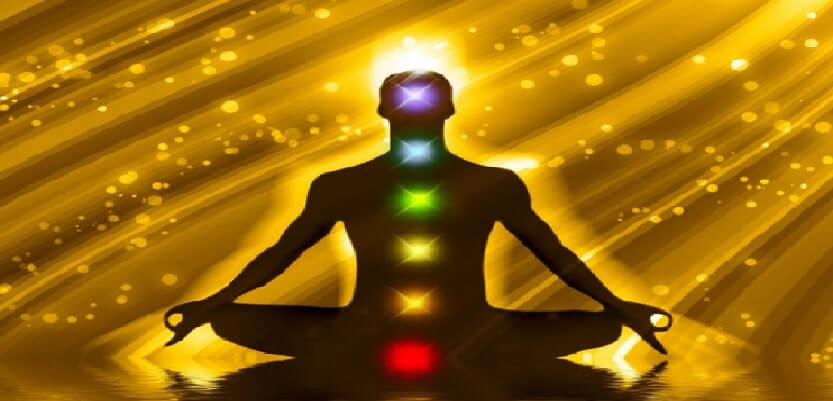Pranayama is a rhythmic breathing exercise. Pranayama consists of two related words; Prana and Ayama. Prana means Life force or cosmic energy and Ayama means to regulate or control. There is cosmic energy within us and it is used for all our regular activities. Through pranayama, we can regulate or control this cosmic energy for better use.
Prana consists of five vital energies - they are Prana, Vyana, Apana, Udana, and Samana.
Prana is used for breathing and functioning of the heart and lungs.
Vyana is when it is used for the circulation of blood and other fluids in the body.
Apana is when it is used for eating, drinking.
Udana means talking and other similar activities.
Samana is for the digestion of food. Among all these activities, breathing is the most important activity.
Pranayama is the practice of consciously regulating the breathing patterns, which leads to a steady flow of energy (prana). The motion of the lungs creates breath. The pumping action of the lungs draws the air in and out. So Pranayama is essentially controlling the vital life energy which helps in the movement of the lungs. The three phases of pranayama are breathing in, holding the breath, and breathing out. Through Pranayama, one can control the Prana. However, Sage Patanjali says when the mind is cleared from all thoughts and ideas, then the fourth pranayama starts automatically. When the fourth pranayama starts, the pranic energy is aligned with that of the cosmic energy.
According to sage Patanjali, Pranayama is the fourth stage among eight disciplines of Yoga till Samadhi. The eight stages are:
--> Yama (Restraining harmful thoughts)
--> Niyama (Cultivating good habits)
--> Asana (Suitable sitting postures)
--> Pranayama (Technique of breathing)
--> Pratyahara (Withdrawing senses from the object of enjoyment)
--> Dharana (Fixing the mind)
--> Dhyana (Uninterrupted contemplation) and
--> Samadhi (Total absorption of mind).
Sage Patanjali in yoga sutra describes with his sutras or formulas, how one can attain the goal of Dharana and Dhyana (meditation) through pranayama.
Sutra 2.49 - tasmin sati shwasa prashwasayoh gati vichchhedah pranayamah
Meaning: After mastering the asanas (feeling comfortable in postures), by controlling or slowing down the process of inhalation and exhalation, the expansion of prana happens.
Sutra 2.50 - bahya abhyantara stambha vruttih desha kala sankhyabhih paridrashtoh dirgha sukshmah
Meaning: There are three aspects to pranayama; external flow or exhalation, internal flow or inhalation, and retention or holding the breath and performed according to time, place, and number, with breath becoming extended & subtle.
Sutra 2.51 - bahya abhyantara vishaya akshepi chaturthah
Meaning: By continuing the process, the fourth pranayama happens, which is beyond the sphere of the external and internal realm. As you go deep, pranayama becomes natural and effortless. This is called the fourth type of pranayama. Sutra 2.52 - tatah kshiyate prakasha avaranam
Meaning: Through the practice of pranayama, the covering of light is diminished or vanished (the ignorance, which is covering the wisdom, is vanished)
Sutra 2.53 - dharanasu cha yogyata manasah
Meaning: By the continuous practice of pranayama, the mind becomes ready for Dharana (concentration).
How to perform the Pranayama?
The basic form of Pranayama consists of three basic steps. They are - Puraka. Kumbhaka and Rechaka. Puraka means inhaling the breath; Kumbhaka means holding the breath and Rechaka is exhaling. The whole exercise consists of, first inhale slowly through the left nostril for 5-6 seconds; hold the breath for 8 seconds, and finally, exhale slowly through the right nostril. The next time the process has to be reversed: Inhale through the right nostril; hold it for some time and exhale through the left nostril. This has to be repeated several times. It is advisable to slowly increase the repetitions through practice. This whole process is called Pranayama.
Initially, inhalation and exhalation can be of the same duration. After some practice, the duration of exhalation can be increased, in the ratio 2:1.
Other types of Pranayama
Some of the important forms of Pranayama are:
Requirements for doing Pranayama
First of all, one should have a calm mind. When the mind is agitated, it will be difficult to regulate the flow of energy. Have a smile on the face. Next, the sitting posture is very important. Sit comfortably with the backbone erect. The chest, neck, and the head should be held vertically in a straight line. you can sit as cross-legged or on an armchair. It is advisable to use Yoga postures such as Padmasana, Vajrasana, Gomukhaasana, Siddhasana. But the backbone should be in a straight line.
Benefits of Pranayama
Several types of research have been done on Pranayama by sages and rishis and also from modern scientists. It is proved that the regular practice of Pranayama will help in many ways.
- It increases longevity: Through Pranayama, the breathing rate decreases. The breathing rate has a direct correlation to the lifespan. The lower breathing rate is likely to increase the lifespan of the person.
- The regular practice of Pranayama reduces mental tensions, worry, anger, and depression. It can control the agitated mind and experience the bliss. it will increase the willpower of the person.
- Pranayama improves blood circulation. Through the rhythmic breathing, the lungs and heart perform better. Because of this, the prana or energy flows to all parts of the body. When oxygen flows properly, the mind and body perform well. It will reduce blood pressure and also relieve asthma.
Caution
It is advisable to practice Pranayama through the guidance of a competent teacher. If it is not done properly, it can be dangerous also. Do the process slowly and do not be in a hurry. If you have enough time, then only do it. Pregnant women should avoid doing Pranayama. If one has chronic disorders, it is better to consult a guide.
